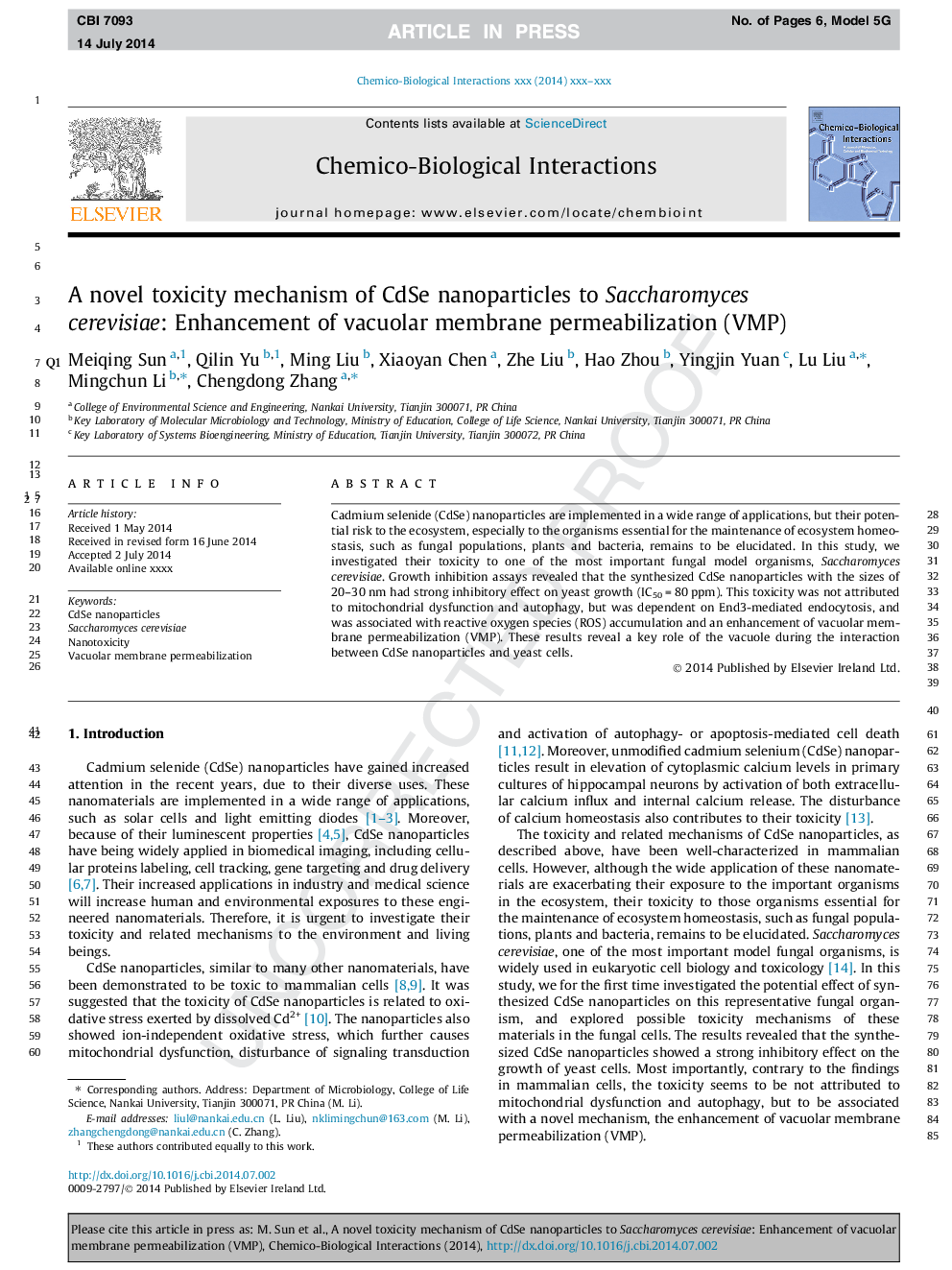| Article ID | Journal | Published Year | Pages | File Type |
|---|---|---|---|---|
| 5847985 | Chemico-Biological Interactions | 2014 | 6 Pages |
Abstract
Cadmium selenide (CdSe) nanoparticles are implemented in a wide range of applications, but their potential risk to the ecosystem, especially to the organisms essential for the maintenance of ecosystem homeostasis, such as fungal populations, plants and bacteria, remains to be elucidated. In this study, we investigated their toxicity to one of the most important fungal model organisms, Saccharomyces cerevisiae. Growth inhibition assays revealed that the synthesized CdSe nanoparticles with the sizes of 20-30Â nm had strong inhibitory effect on yeast growth (IC50Â =Â 80Â ppm). This toxicity was not attributed to mitochondrial dysfunction and autophagy, but was dependent on End3-mediated endocytosis, and was associated with reactive oxygen species (ROS) accumulation and an enhancement of vacuolar membrane permeabilization (VMP). These results reveal a key role of the vacuole during the interaction between CdSe nanoparticles and yeast cells.
Related Topics
Life Sciences
Environmental Science
Health, Toxicology and Mutagenesis
Authors
Meiqing Sun, Qilin Yu, Ming Liu, Xiaoyan Chen, Zhe Liu, Hao Zhou, Yingjin Yuan, Lu Liu, Mingchun Li, Chengdong Zhang,
